In Houston, Texas on eBay with little time left is this 1973 Citroën SM, with a three-liter carbureted engine and automatic transmission. While the car is in fairly good order (especially the body) it’s a bit of a distress sale because the owner can’t get it started.
Here’s what we know: “This is a complete non-running car. It is in pretty good condition cosmetically. Front seats were reupholstered in the original type of leather by the previous owner. There are no dents or other exterior damage, such as rust. I don’t know its exact mechanical condition. At one point, I did put a new battery in it, and it would not start. The starter did not crank. The dash lights came on. The cars has been stored in my garage with a car cover. The odometer shows 40,180 miles I can’t vouch for that but it wouldn’t surprise me because of the overall condition of the car.”
That’s about it. Not mentioned is the fact that this is a sought-after Euro edition with the covered headlights that were banned in America. The SM is an exotic bird, documenting a brief flirtation between Maserati and Citroën.
The exterior of this car looks quite nice, but the interior seems to be badly infested with mold. It might clean off and look pretty presentable, but the scent could linger. That weird steering wheel cover has to go, however.
Whatever’s wrong with this car could turn out to be pretty simple, but that’s often not the case with these highly complex, temperamental international collaboration cars. The Chrysler TC by Maserati, anyone? The Cadillac Allante? The lightweight aluminum engine should have a trio of Webers, but no engine photo confirms that.
Here’s the history: The SM coupe was produced from 1970 to 1975, winning many plaudits, including 1972 Motor Trend Car of the Year. Citroën bought Maserati in 1968, specifically to produce a grand touring car combining the French carmaker’s hydraulic suspension with Maserati’s sophisticated V-6. The SM was first shown in Geneva in March of 1970 and was on sale in France later that year.
There were no RHD cars, but there were some RHD conversions. French horsepower taxes kept the displacement small, just 2.7 liters. With the three carbs and the automatic, the SM produced 168 horsepower. With the three-liter version of the engine, output went up to 178 horsepower. The V-6 was also used in Maerati Meraks and Biturbos. Some Citroën hydraulic technology was also used in the Merak, Khamsin and Bora. When they’re working, these cars are amazing to drive, with brakes to match (discs at all four corners). The shape proved very aerodynamic, with a 0.26 coefficient of drag (later cited at 0.33).
Innovative features on the front-wheel-drive SM, designed in-house, include the hydro-pneumatic self-leveling suspension, and headlights (also self-leveling) that swiveled with the steering wheel, although that’s the feature that was banned in the U.S. (and why it’s presence on this one makes it more interesting). There was variable-assist power steering too, and rain-sensitive wipers.
There’s no question that the SM is a significant car, but non-runners are a bit frightening if you can’t afford an open checkbook. This one apparently doesn’t even turn over—the starter? Buy the best car you can afford, they say. Classic.com puts the market, which seems a bit down from its peak, at $40,240.
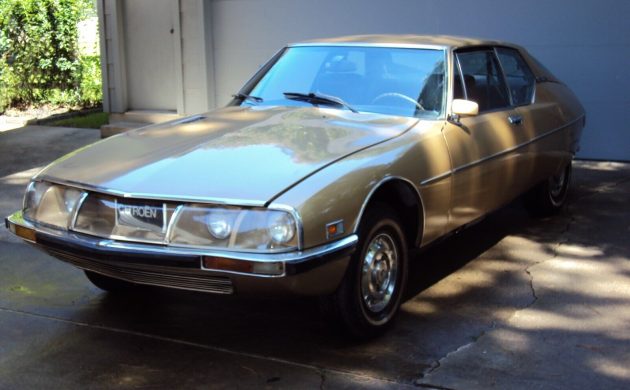
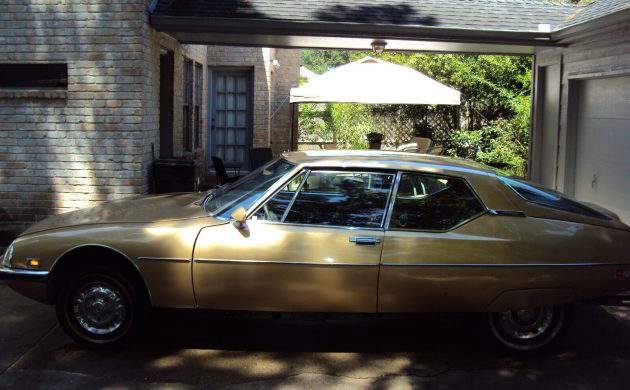

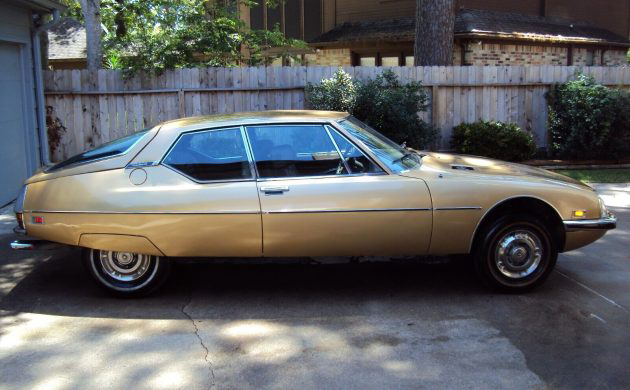

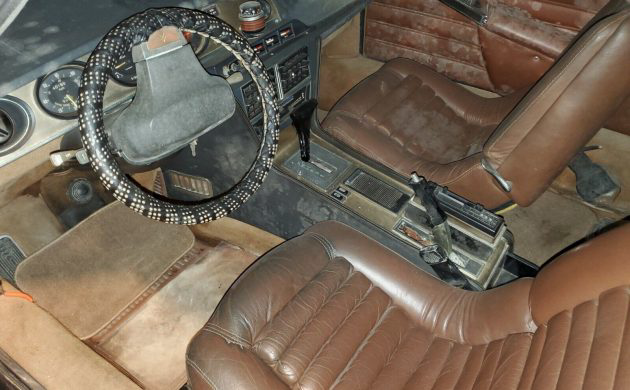
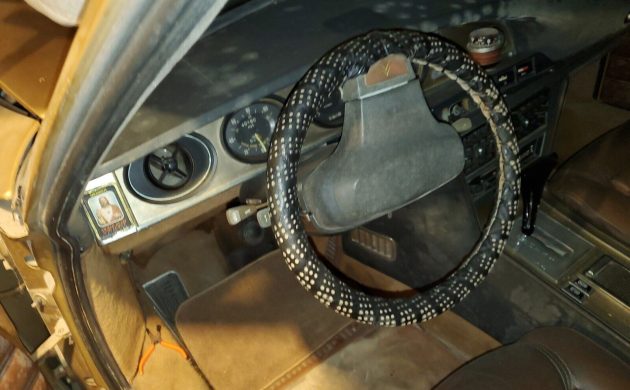






These are the US-market quad-round sealed-beam headlights with an added (plexi?)glass cover. The Euro-spec headlights were completely different, composite units with oblong lens/reflector housings holding separate bulbs, 3 on each side with the innermost pair rotating into turns.